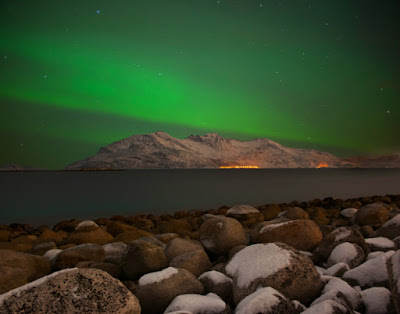The Northern lights
The aurora borealis has been fascinating travellers to Norway and locals alike for generations, but what is the science behind the northern lights?
Each appearance of the northern lights is unique. Often you see three green bands across the night sky. Or the lights come as flickering curtains or rolling smoke. The colour is a luminous green, often with a hint of pink along the edge, and occasionally with a deep violet centre. The colour palette seems to come from the 1980s.
If there is a lot of activity up there, the northern lights explode for a minute or two in a corona. The next minute it is all over, and you ask yourself whether this was real or just an Arctic fata morgana.
The science behind the northern lights
But what exactly are the northern lights? It is the sun that lies behind the formation of the auroras. During large solar explosions and flares, huge quantities of particles are thrown out of the sun and into deep space.
When the particles meet the Earth's magnetic shield, they are led towards a circle around the magnetic North Pole, where they interact with the upper layers of the atmosphere. The energy which is then released is the northern lights. All this happens approximatelty 100 kilometres above our heads.
Each appearance of the northern lights is unique. Often you see three green bands across the night sky. Or the lights come as flickering curtains or rolling smoke. The colour is a luminous green, often with a hint of pink along the edge, and occasionally with a deep violet centre. The colour palette seems to come from the 1980s.
If there is a lot of activity up there, the northern lights explode for a minute or two in a corona. The next minute it is all over, and you ask yourself whether this was real or just an Arctic fata morgana.
The science behind the northern lights
But what exactly are the northern lights? It is the sun that lies behind the formation of the auroras. During large solar explosions and flares, huge quantities of particles are thrown out of the sun and into deep space.
When the particles meet the Earth's magnetic shield, they are led towards a circle around the magnetic North Pole, where they interact with the upper layers of the atmosphere. The energy which is then released is the northern lights. All this happens approximatelty 100 kilometres above our heads.


No comments:
Post a Comment